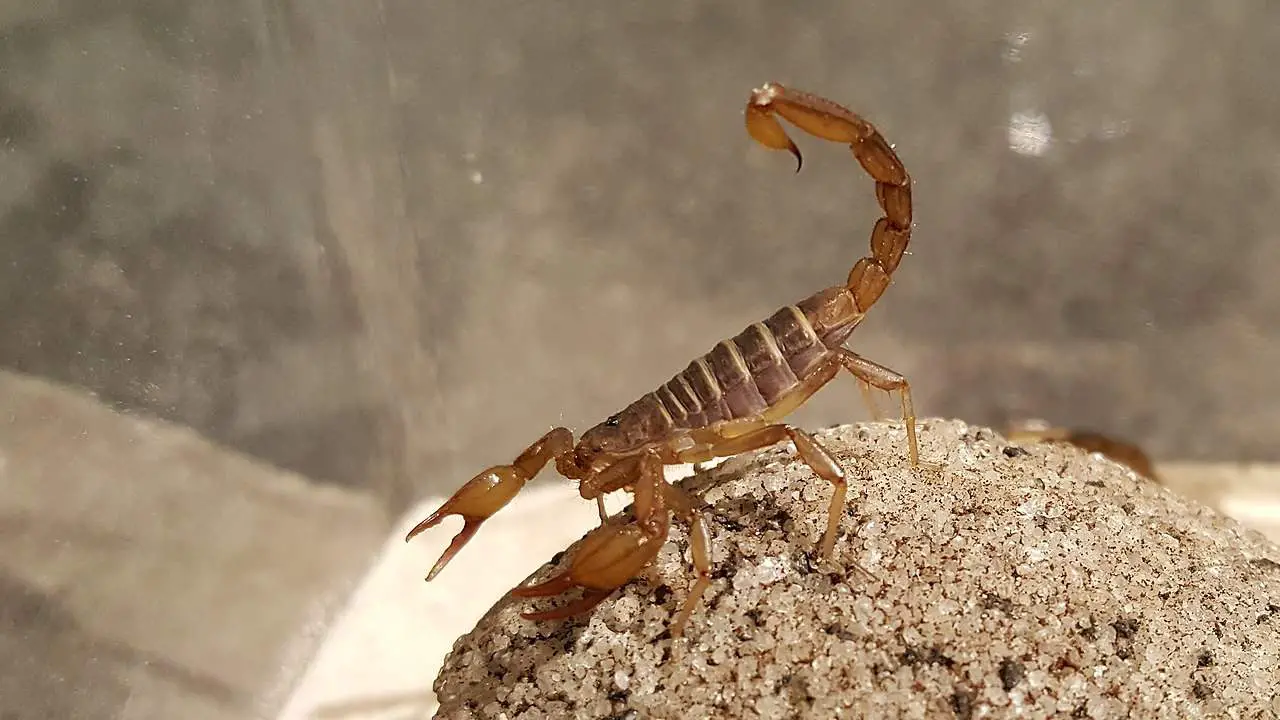There are four different species of scorpion in Idaho. They are the burrowing scorpion, the black-back scorpion, the yellow ground scorpion, and the northern scorpion.
The gem state is also home to an interesting looking non-scorpion arachnid called the wind scorpion. Next, we’ll talk a little more about each one of these.
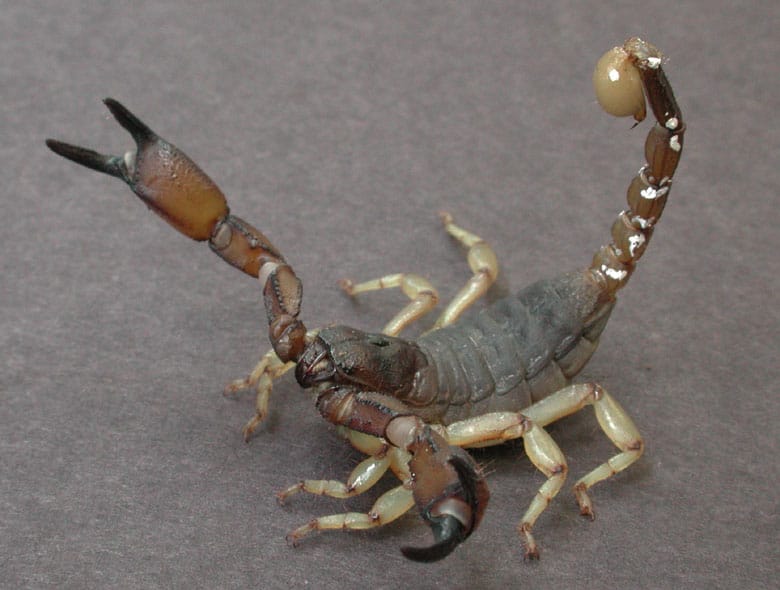
Burrowing Scorpion (Anuroctonus phaiodactylus)
The burrowing scorpion has the scientific name Anuroctonus phaiodactylus. It also goes by the common names black clawed scorpion, swollen stinger scorpion, and mafia scorpion. These scorpions live in California, Nevada, southern Idaho, and Utah.
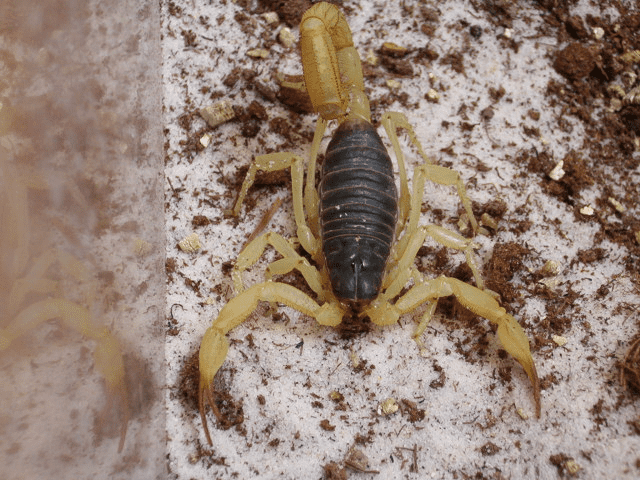
Black-back Scorpion (Hadrurus spadix)
The Black back scorpion or black hairy scorpion is closely related to the more common desert hairy scorpion.
These are fairly large as scorpions go. As adults, they are up to 5 1/2 inches long. They have dark gray to black bodies and pale-yellow legs.
These Scorpions live in Arizona, Nevada, Southern Oregon, and Southern Idaho.
In Idaho, they exist in Owyhee, Elmore, Ada, and Canyon Counties. See
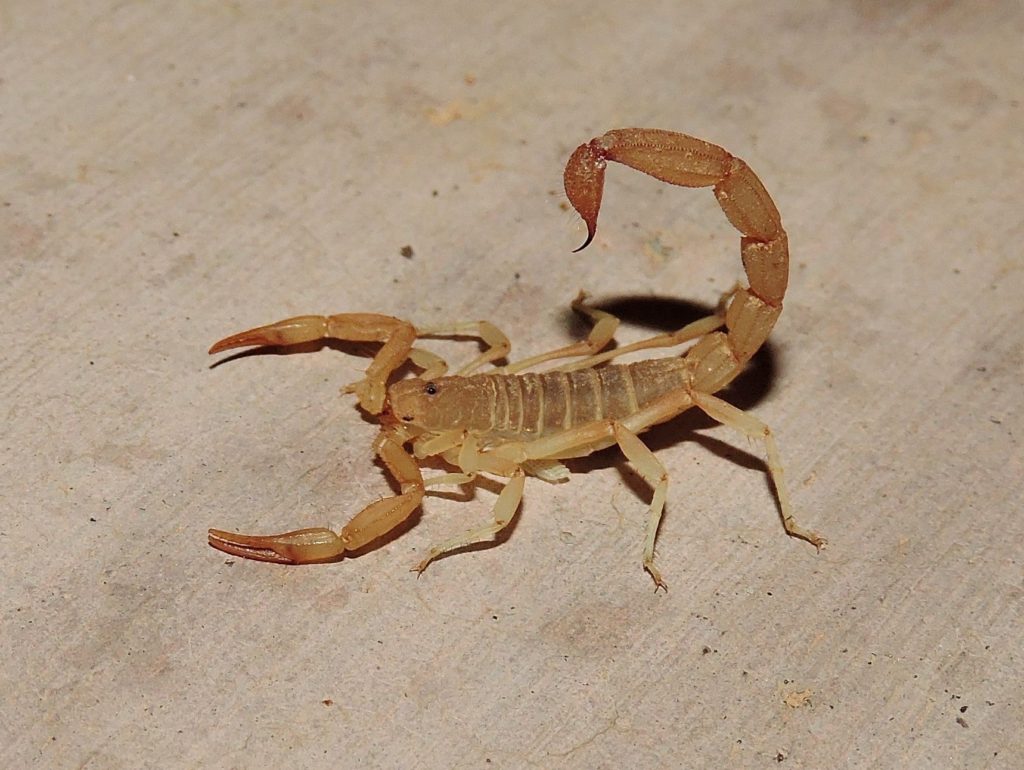
Yellow Ground Scorpion (Paravaejovis confusus)
The Yellow Ground Scorpion is the common name for the Vaejovis confusus. Other common names for this species are yellow devil scorpion and stripe-tailed scorpion. This is a nocturnal scorpion that lives from southern Arizona up through western Utah and into southern Idaho. They are yellowish in coloration with brown backs and lateral brown stripes that run the entire length of their tails.
In Idaho, they exist in Caccia, Twin Falls, Owyhee, Gooding, Elmore, Ada, and Canyon Counties. See
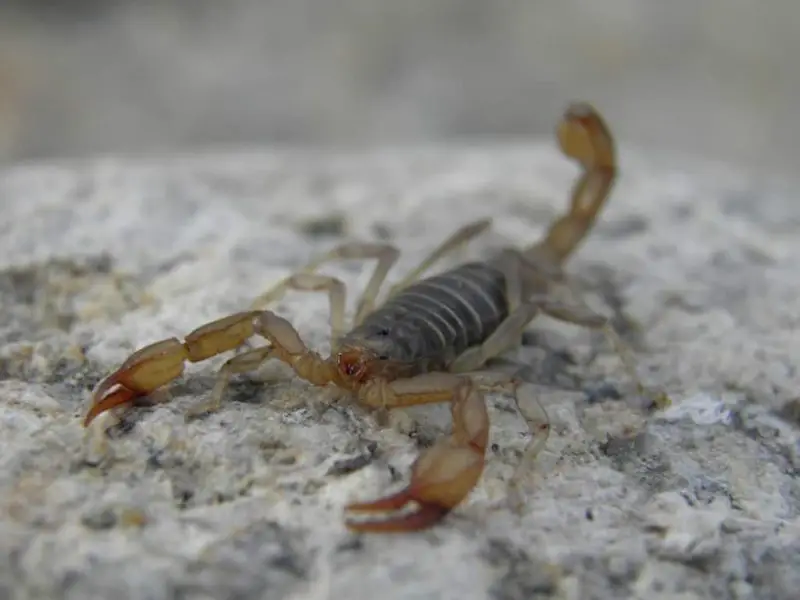
Northern Scorpion (Paruroctonus boreus)
The Northern scorpion, whose scientific name is Paruroctonus Boreus, is more tolerant to the cold than are other types of scorpions. Consequently, it ranges quite a bit further north than other scorpions do.
Northern scorpions are found in 12 U.S. states and 3 Canadian provinces. The northern scorpion species range begins in northern Arizona and goes north to southwestern Canada. Northern scorpions are present in Arizona, California, Nevada, Utah, Idaho, Wyoming, Montana, North Dakota, South Dakota, Oregon, and Washington in the United States. In Canada, Northern Scorpions live in southern British Columbia, southern Alberta, and southern Saskatchewan. See
Northern scorpions are present in all or parts of every county in Idaho. See
Where to look for scorpions
Scorpions are usually located on the south and west-facing slopes where they get more direct sunlight. During the day, they live in burrows left by other animals, fissures in the rock, and beneath wooden debris.
Take caution because although the sting of an Idaho scorpion generally isn’t any more serious than a bee sting, all stings can potentially cause allergic reactions. Also, bare in mind that where you find scorpions, you usually also find rattlesnakes. Pay attention to where you place your hands and feet.
Most scorpions have fluorescent compounds in their exoskeletons that make them glow under ultraviolet light. If you are camping in an area where scorpions are active, or if you want to check around your home to see if you have any scorpions, the best way to do it is to wait until after dark and check around with black lights. It’s a good idea to go armed with an ultraviolet flashlight to scan your campsite after dark. Scorpions are nocturnal creatures; as such, they will be out and about after dark, searching for a meal.
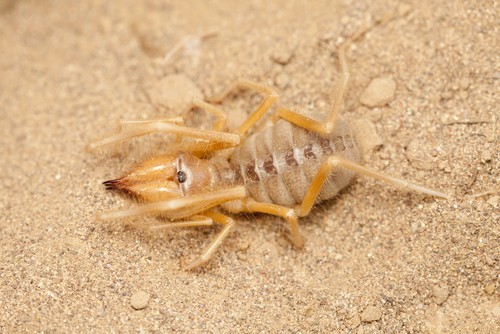
Wind scorpions in Idaho
Another interesting arachnid that you might run across in Idaho is the wind scorpion. Other names that wind scorpions are also sometimes called sun spiders or camel spiders. These creatures have strong jaws that are capable of delivering a nasty bite. However, they are not venomous. They look like a cross between a spider and a scorpion, but they are actually neither. They are an arachnid, but they are from the order sollifugae. There are more than 1000 sollifugae species that live in Asia, Africa, the Americas, and southern Europe. See
In North America, most wind scorpion species are nocturnal. They spend the daylight hours in shallow burrows, under rocks, wood debris, or dried cattle dung. They are extremely quick, aggressive predators that feed on anything they can catch. See
The sun spider is common in the Boise area and other parts of the Treasure Valley, such as Marsing, Emmett, and Homedale. See
Recent Posts
The only venomous snakes in Washington State are Northern Pacific Rattlesnakes. The Northern Pacific Rattlesnake (Crotalus oreganus oreganus) is a sub-species of the Western Rattlesnake. Anyone...
Skunks are not classified as true hibernators. But they go into a state of torpor when the weather gets cold. Skunks are light sleep hibernators, along with opossums, bears, and raccoons. ...

